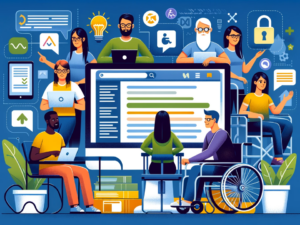0
0 reviews
Analyzing & Measuring Destination/Business Accessibility
The degree of accessibility significantly influences regional tourism flow and the performance of the global tourism industry. However, the tourism ...
industry itself comprises many sectors, and accessibility measurements may not comprehensively incorporate the simultaneous accessibility of corresponding destinations. Moreover, perspectives are still lacking in the analysis of tourism origin countries. Therefore, this module provides a new approach based on network data envelopment analysis and social network analysis to identify potential opportunities among origin countries for accessibility to a given tourism destination. This course examines all aspects of the relations between the tourism operators, or the service suppliers, and the tourists as customers. The principles and art of a good welcoming and hostmanship will be taken into account as well as the assumption of correct behaviors and attitudes towards people with disabilities and specific access needs.
Show more
Instructor
Course Creator
Category
- Description
- Curriculum
- FAQ
- Notice
 |
 |
SPONSORS: VIAMOON CONSULTANCY & CAREADISE
Where Miracles Happen
This course equips you with the skills and knowledge to assess the accessibility of destinations and businesses according to Universal Design principles.
Course Objectives:
- Understand key concepts and issues in accessibility data collection for tourism.
- Learn principles and best practices for presenting accessibility information to visitors with disabilities.
- Identify accessible products and services.
- Evaluate the accessibility of a product or service using appropriate tools and methods.
- Measure, describe, and photograph key accessibility features and barriers.
- Analyze the quality of facilities and services for different user types.
Learning Outcomes:
By the end of this course, you will be able to:
- Identify Accessible Products/Services: Recognize products and services that cater to people with disabilities.
- Evaluate Accessibility: Assess the accessibility of a product or service using various evaluation methods.
- Measure and Document Accessibility: Measure key accessibility features and barriers using appropriate tools and capture them through photographs.
- Analyze Accessibility for Different Users: Evaluate how well facilities and services cater to the needs of diverse users with disabilities.
Course Content:
- Key Accessibility Evaluation Criteria: Learn the essential criteria used to assess accessibility.
- Accessibility Analysis Schemes: Explore different frameworks for analyzing accessibility.
- Verification and Evaluation Methods: Understand techniques for verifying and evaluating accessibility claims.
- Practical Accessibility Assessments: Gain hands-on experience through practical examples of accessibility assessment.
- Visual Learning: Analyze good and bad accessibility practices through photo examples.
- The Legal Landscape of Accessibility: Explore how legislation influences accessibility requirements.
- Accessibility Data Collection Tools: Learn how to manage and utilize tools for collecting accessibility data.
- Accessibility Information Standards: Understand key accessibility information standards like OSSATE Photo and Measurement Guide, ENAT Access Statement, and other Accessible Information Schemes (AIS).
This course will provide you with the necessary skills and knowledge to contribute to a more inclusive tourism industry by ensuring destinations and businesses are accessible to all.
People with mobility and sensory impairments and people with cognitive impairments / learning difficulties
Visitors with Food Intolerance or Special Dietary Requirements
Functional/technical Requirements for an Accessible Built Environment and Tourism Infrastructure
What is this course about?
This course teaches you how to assess the accessibility of destinations and businesses, focusing on creating inclusive environments for everyone. You'll learn evaluation criteria, assessment methods, and how to cater to diverse needs.
What are the prerequisites for this course?
There are no formal prerequisites. But try finishing previous courses in all accessibility category. A general interest in accessibility and a willingness to learn are beneficial.
How is this course structured?
The course covers key concepts, evaluation criteria, assessment methods, and the needs of diverse user groups. It includes practical exercises, visual learning, and discussions of relevant legislation and standards.
What kind of tools and methods will I learn to use?
You'll learn about various accessibility assessment tools, including standardized checklists, measurement tools, and photography techniques for documenting accessibility features and barriers. You'll also become familiar with resources like the OSSATE Photo and Measurement Guide and ENAT Access Statement.
Will I get to do any hands-on assessments?
Yes, the course includes practical accessibility assessments to give you real-world experience.
How will this course benefit me?
This course will equip you with the skills to evaluate and improve accessibility, making you a valuable asset in creating a more inclusive tourism industry. You'll be able to contribute to making travel and leisure more accessible to everyone.
What are Universal Design principles?
Universal Design is the design and composition of an environment so that it can be accessed, understood and used to the greatest extent possible by all people 1 regardless of their age, size, or disability.
What accessibility standards will be covered?
The course will cover relevant accessibility guidelines and regulations, such as the ADA (Americans with Disabilities Act), ISO standards, and WCAG (Web Content Accessibility Guidelines).
How will I learn to cater to the needs of different user groups?
The course dedicates specific sections to understanding the diverse needs of people with mobility, sensory, cognitive, and dietary needs, as well as families with small children and older adults.
What will I learn about accessibility data collection?
You'll learn about key concepts and issues in collecting accessibility data, including how to manage and utilize data collection tools.
How will I learn to present accessibility information effectively?
The course will cover principles and best practices for presenting accessibility information to visitors with disabilities, ensuring clear and accessible communication.
What is the importance of understanding the legal landscape of accessibility?
Understanding relevant legislation is crucial for ensuring compliance and promoting best practices in accessible tourism.
How does this course address website accessibility?
The course covers website accessibility as part of evaluating information services, including WCAG compliance and other key considerations.
What are the key accessibility evaluation criteria I will learn?
The course will cover essential criteria for assessing various aspects of accessibility, including information services, transportation, the built environment, and services and activities.
What materials do I need for this course?
Specific materials will be outlined in the course syllabus, but you may need a camera (or smartphone with a camera), measuring tape, and possibly access to a computer and the internet.
Will there be any field trips or site visits?
This will depend on the specific course offering. Check with the instructor.
How will my understanding of the material be assessed?
Optional: Assessment methods may include quizzes, assignments, practical assessments, and a final project. Details will be provided in the course syllabus.
The Curriculum may vary by location and/or business entity.

Share
Course details
Duration
Between 8 - 10 Hours Module
Lectures
7
Video
Various Videos
Level
Beginner
Popular courses





